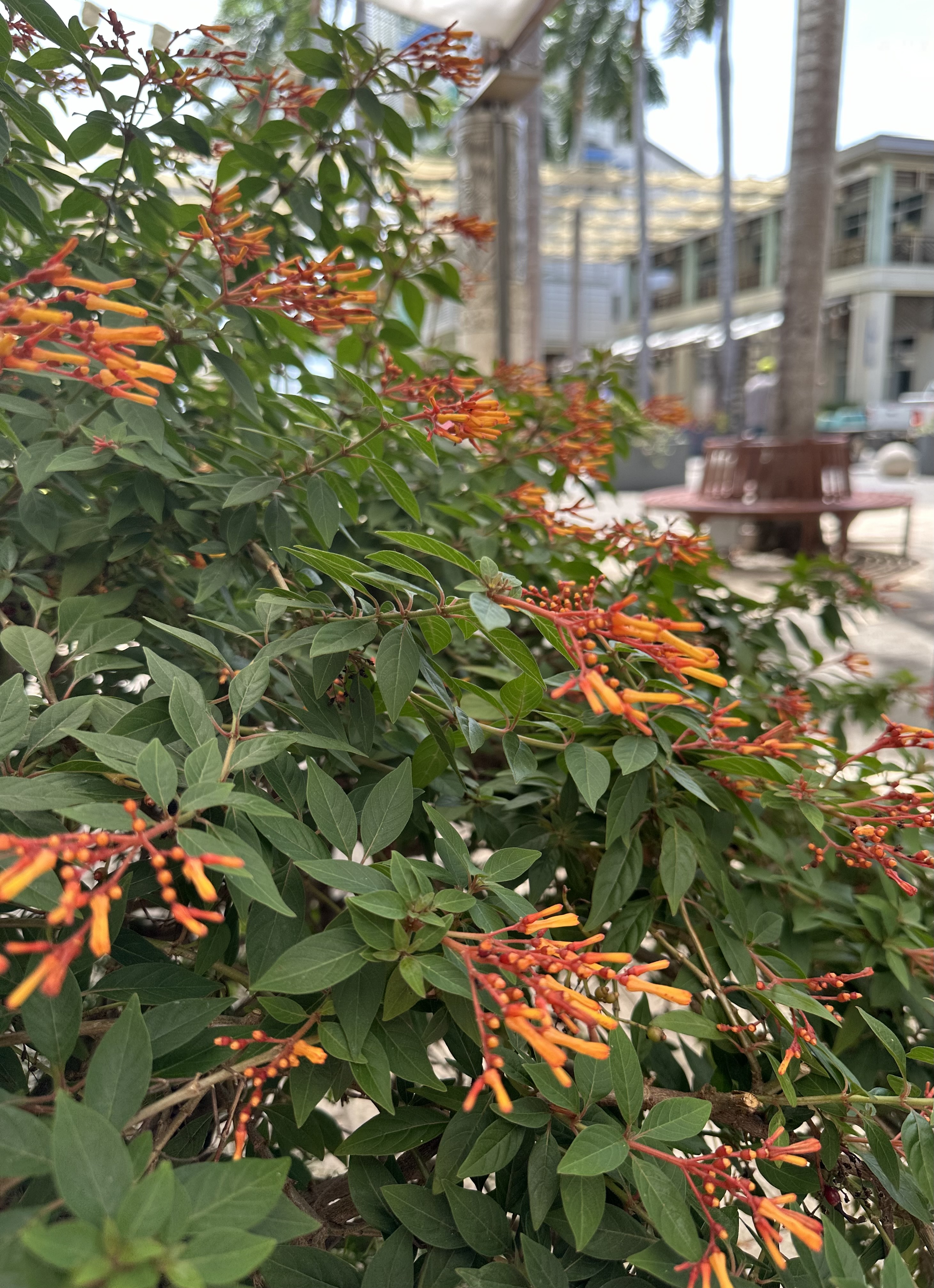

As a tribute to Constitution Day — which celebrates Cayman's first written constitution — we recognise a firecracker that is always visible, not just on special occasions. Planted thoughtfully beneath the shelter of shade cloth along the Paseo in Camana Bay, you may be able to catch two firecracker plants in one frame during one of the imaginative fireworks shows on the Crescent.
Common names of plants often reference either their appearance or their uses, thus the firecracker plant is highly felicitous for the evergreen shrub also known as Hamelia patens. Its display, obvious from a distance, is certainly representative of a firecracker. Bright tubular cymes (terminal clusters) of yellow, orange-red and red explode from the reddish stems, which beautifully contrast against the herbaceous green hue of its whorled leaves.
Blooming year round and reaching heights of 10-15 feet with a similar spread, the firecracker plant thrives in high heat. Native to the American subtropics and tropics, it is most floriferous in full sun, but can handle part shade — and may even prefer it on the hottest of days. It can be drought tolerant but is somewhat fickle about having just the right soil composition, which must include a well-draining profile. Planting in part shade can help quell this enigma since less water is lost through evaporation.
Maybe the most interesting and widely unknown characteristic of the firecracker plant is its tiny edible fruits. Butterflies attracted to the fiery tubular flowers pollinate Hamelia patens, which then produces small dark fruits adored by birds — and humans. The firecracker plant has a history nearly as rich as its presentation, dating back to the Mayan civilisation. Mayans called the plant Ix-canan, or "Guardian of the Forest." In Mexico, it is made into a fermented drink, and many other cultures have recorded multiple medicinal uses from both the fruit and the leaves.
The genus Hamelia pays homage to the famed French scientific writer, agronomist and botanist, Henri-Louis Duhamel du Monceau; and the specific epithet, patens, means "spreading." Perhaps monsieur Duhamel also recognised the bountiful qualities of the firecracker plant in his studies. Remember, however, plenty of research should be taken very seriously prior to consuming or preparing any plant with edible characteristics for safety, and to gain the most benefit the plant has to offer.
This article was published in the July/August 2024 print edition of Camana bay Times.